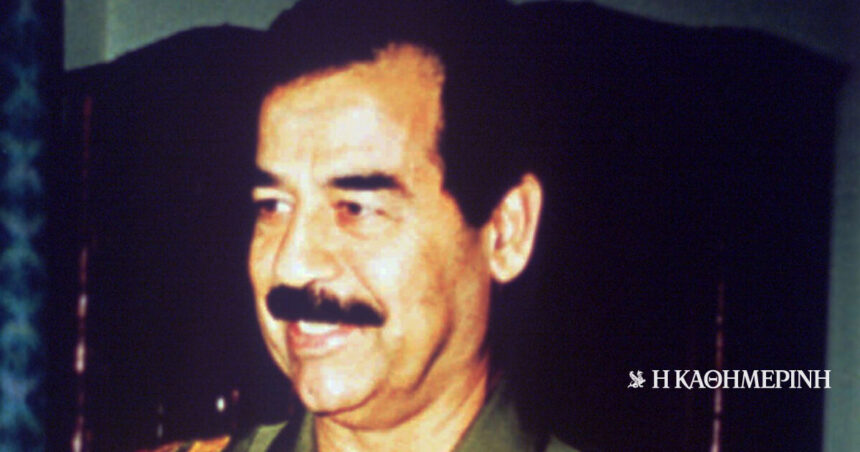As the whole world prepared to say goodbye to 2006, on December 30 the final chapter of a tumultuous period in modern history was written: in a suburb in the northeast of Baghdadthe execution of its former president was taking place IraqSaddam Hussein. His death Hussain it was the culmination of years of political turmoil, conflict and a post-war legal process aimed at exorcising the ghosts of the past. For some, his execution symbolized justice and the end of an era of brutal dictatorship. For others, it was seen as a divisive and politically motivated act, which worsened the already volatile situation in Iraq.
Born on April 28, 1937 in the town of Al-Awja, near Tikrit, Iraq, Saddam Hussein came from a humble background. In his youth he joined the Baath Party and gradually rose through its ranksto become president of Iraq in 1979. His regime was characterized by extreme violence, repression of opposition, and fierce personalism, and Hussein grew into absolute power in Iraq. His politics were characterized by aggressive nationalism, economic development, and the constant use of military force to maintain control of the country.
Saddam’s government was also notorious for its human rights abuses, including use of chemical weapons against the Kurdish population in northern Iraq during the Anfal campaign in the late 1980s, but also suppression of Shiite insurgencies after the 1991 Gulf War. His administration also led Iraq into a disastrous war with Iran from 1980 to 1988, which resulted in hundreds of thousands of deaths, as well as the 1990 invasion of Kuwait, which sparked the Gulf War and led to a devastating defeat by a coalition led by USA.
In 2003, the US invaded Iraq, claiming it possessed weapons of mass destruction and had ties to terrorist organizations such as al-Qaeda.
Saddam Hussein’s Iraq was increasingly isolated from the international community due to sanctions, UN resolutions and continued suspicion of its weapons of mass destruction programs, which became a major issue after 2003 US invasion.
In that year, the United States, in which the president was George Bush the younger, invaded Iraq, claiming he possessed weapons of mass destruction and had ties to terrorist organizations such as al-Qaeda. The invasion, which quickly led to the collapse of Hussein’s regime, had profound and far-reaching consequences.
After the fall of Baghdad and the removal of Saddam Hussein from power, a long and bloody insurgency ensued. Hussein himself went into hiding, but on December 13, 2003, he was captured by US forces near his hometown of Tikrit. Hussein’s capture was hailed as a watershed moment in the warbut it also marked the start of a legal process that would lead to his execution.
The once-all-powerful Saddam Hussein was tried by a Special Iraqi Tribunal set up by the Coalition Provisional Authority, which oversaw the country after the invasion. He faced numerous charges involving crimes against humanity, including the Anfal campaign, the 1982 Dujail massacre and other atrocities committed during his rule.
Hussein’s trial was marred by allegations of procedural irregularities, and his defense lawyers faced threats and violence.
The trial itself was a highly controversial and politically charged process. Many in Iraq saw it as a necessary step to hold Hussein accountable for his crimes, while others saw it as an act of revenge and a tool for sectarian divisions. Hussein’s trial was marred by allegations of procedural irregularities, and his defense lawyers faced threats and violence. Nevertheless, the court found Hussain guilty of crimes against humanity for his role in the Dujail massacre, where 148 Shia Muslims were executed in retaliation for a failed assassination attempt on him.
On December 30, 2006, Saddam Hussein executed by hanging in a former military facility in Qandimiya, Baghdad. His death came just three weeks after the court delivered its verdict and sentenced him to death. The execution itself was carried out by the Iraqi government, despite pressure from international human rights groups who argued that it was politically motivated and violated international law.
The execution was controversial not only because of the methods used but also because of the timing and circumstances. Many critics argued that Hussein’s execution further fueled sectarian tensions in Iraq, particularly between the Sunni and Shiite populations. The release of an unofficial, of unauthorized video of Hussein’s final momentswhich was taken on a hidden mobile phone and shows him being taunted by his captors, has fueled domestic and international protests.
However, Hussein’s death did little to stabilize Iraq, which continued to experience violence and insurgencies. His execution was followed by the escalation of sectarian violence and the rise of groups such as the Islamic State (ISIS)which continued to further destabilize the region.
Column editor: Myrto Katsigera, Vassilis Minakakis, Antigone-Despina Poimenidou, Athanasios Syroplakis




